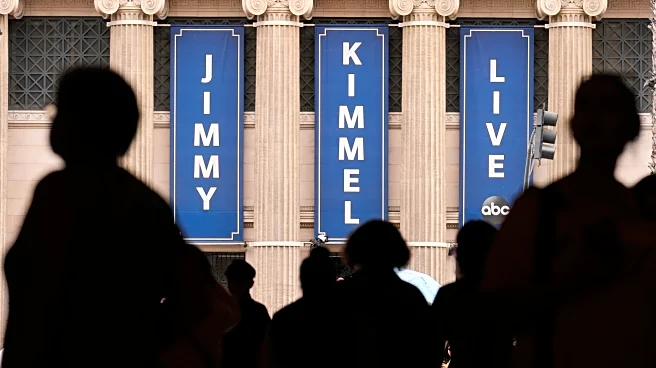What's Happening?
Late night TV ad spend has significantly decreased among major network broadcasters like ABC, NBC, and CBS, dropping from $439 million in 2018 to $220.6 million in 2024. This decline is attributed to the ongoing shift towards streaming services and shrinking ratings for traditional linear television. Despite this reduction, late night TV still attracts advertisers due to the potential for viral clips and integrations that offer additional return on investment. In the first half of 2025, ad spend in this segment has seen a slight increase, indicating some resilience in the face of changing media consumption habits.
Why It's Important?
The decline in late night TV ad spend reflects broader trends in media consumption, where streaming services are increasingly favored over traditional television. This shift impacts the advertising strategies of companies, which may allocate more resources to digital platforms. The resilience of late night TV, despite reduced ad spend, suggests that it still holds value for advertisers seeking unique engagement opportunities. This trend could influence how media companies structure their programming and advertising models, potentially leading to innovations in content delivery and audience interaction.
What's Next?
Media companies may continue to adapt by enhancing their digital presence and exploring new advertising formats that cater to streaming audiences. Advertisers might shift focus towards platforms that offer better targeting and engagement metrics. The evolution of late night TV could lead to changes in content creation, with a greater emphasis on digital integration and cross-platform strategies.











